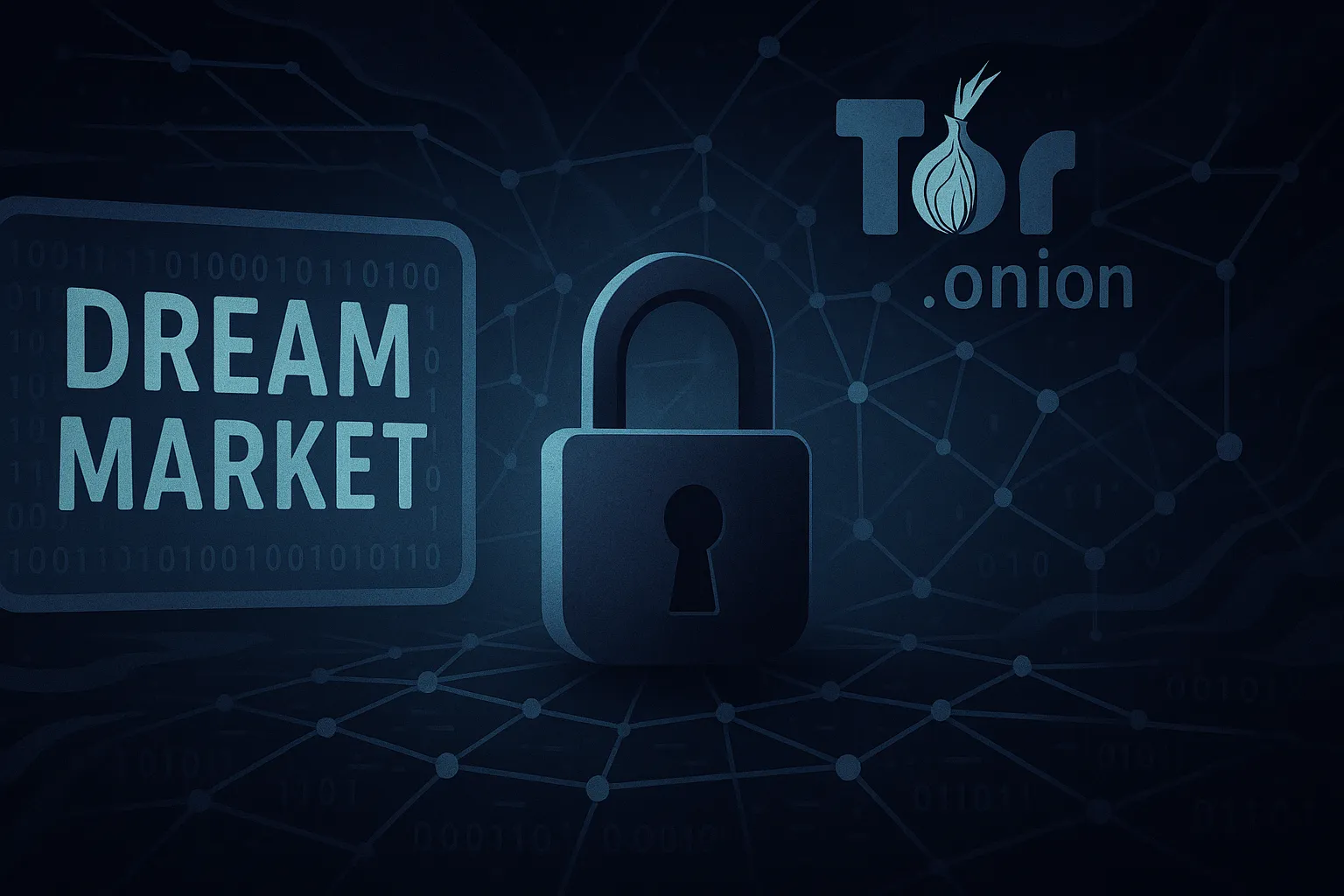Dream Market: Ultimate 5-Minute Darknet Guide
Dream Market: A 5-Minute Read on the Darknet’s Former Giant
Dream Market was large and well-known darknet marketplace active from quite early in 2013 until the market closed at the request of law enforcement in March of 2019. Access to the market required the Tor network exclusively, and it offered anonymous selling of illegal goods—drugs and fake documents to hacking software—and maintaining vendor vetting to a high degree along with dispute resolution. Throughout its six-year lifetime, Dream Market set marketplace structure, security protocols, global user interaction norms, but ultimately fell to global law enforcement efforts and seizures. This article reveals its beginning, business model, and influence in an abridged, 5-minute overview.
Table of Contents
- History and Emergence
- How Dream Market Worked
- Security and Anonymity
- Rise and Popularity
- Downfall and Law Enforcement Seizure
- Alternatives and Legacy
- Conclusion
- Frequently Asked Questions
History and Emergence
Dream Market came into being in January 2013 as a successor to earlier darknet marketplaces previously shut down by law enforcement authorities. Established on the Tor hidden-service protocol, it attracted businesspeople to create an open rival to Silk Road and its clones. Stability was favored by first administrators—providing a bare minimum of downtime through upgrades—and included additional moderated forums and consumer safeguards. By mid-2014, Dream Market had risen to dominate substantial competition thanks in part to regular site-performance upgrades and increasing vendor population of dozens of product types.
How Dream Market Worked
Accessing Dream Market meant a download of the Tor Browser and identifying its unique .onion address. Buyers registered with usernames, escrow accounts funded in Bitcoin (later, Monero), and could surf listings sorted by category. Sellers offered extended descriptions with pics, price, and postage; buyers paid through the escrow system, with funds not released until delivery confirmation. Conflicts were mediated by location managers, with a fee—typically 2–8%—taken on every sale. Later, buyer chat integration and vendor rating systems contributed to greater trust and integrity.
Security and Anonymity
Dream Market’s developers were heavy on anonymity: each page was served out of Tor’s encrypted network, and user data was minimized. Compulsory encryption of order data using PGP made it un-interceptable, and multi-signature escrow wallets averted loss by either side. Regular codebase scans and third-party security scans gave astute users confidence. Operational security mistakes—such as vendors who employed PGP keys for other uses—effectively divulged identities for no apparent reason, reminding users of the danger of darknet commerce.
Rise and Popularity
Between 2015 and 2017, Dream Market grew exponentially: tens of thousands of items per day, and monthly global traffic in excess of 300,000 unique users. Its advanced UI, customer-service focus, and speedy resolution of disputes set it apart from its more free-wheeling competitors. The platform was multi-lingual, sellers shipped internationally, and it became a global economy. Its profile was boosted by tabloid and technical press coverage, selling to hobbyists, researchers, and law-enforcement interest too.
Downfall and Law Enforcement Seizure
In March 2019, some international agencies—the FBI, Dutch National Police, and German Bundeskriminalamt among them—joined forces to dismantle Dream Market’s activities. Administrators, concerned about the threat of arrest, issued an “orderly shutdown” notice and directed users to a lock-up page. Bitcoin and Monero escrowed funds were frozen or seized, reports said. While few admin-level arrests were publicly announced, the operation was a cold warning: no anonymity system is immune to coordinated, multi-jurisdictional pressure.
Alternatives and Legacy
Since Dream Market’s shutdown, a number of follow-on sites have filled the vacancy—some actual forks of its codebase, others entirely new creations. Platforms like Empire Market and White House Market were built on top of many of Dream’s more developed features, but none of them gained its liquidity or network of reputation. Researchers and cybersecurity firms, however, continue to sift through Dream’s data breaches and forum dumps for darknet economy intelligence. Its memory will stay as a case study for the conflict between privacy technology and world law enforcers.
Conclusion
Dream Market’s six-year existence revolutionized the landscape of darknet markets as it brought together user-friendly design and virulently security-oriented design. Its abrupt move to a closed status was a reminder to players that operational security and jurisdictional authority can topple even the most sophisticated hidden-service. Today, as replacement markets emerge and disappear, Dream Market serves as a point of reference—both for what it was able to achieve and for what it could not achieve—keeping us aware of the ever-evolving cat-and-mouse game of darknet operators and detectives.
Frequently Asked Questions
What was Dream Market?
Dream Market was a darknet market, existing from 2013 to 2019, where users bought and sold illegal products anonymously on the Tor network.
How did Dream Market ensure anonymity?
It employed Tor hidden services, mandatory PGP encryption of messages, and multi-signature escrow wallets to protect both buyers and vendors.
Why did Dream Market shut down?
In March 2019, synchronized worldwide law-enforcement efforts took it down, froze escrow deposits, and prompted administrators to publish a uneconomical shutdown notice.
What are the best alternatives to Dream Market?
Following the shutdown, Empires and White House Markets adopted many of Dream’s features, but none of them could match its scale or trust network.
Can you access Dream Market now?
No—Dream Market is offline for good after its shutdown in 2019, and the original .onion link is no longer active.




